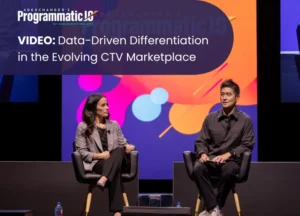
The advertising and digital media industries have evolved drastically over the years, but a new challenge has quietly emerged.
As viewers across Southeast Asia consume content across countless platforms, advertisers are eager to capitalise on this growth. Yet, the explosion of devices and channels has made it increasingly difficult to measure who they’re reaching and what’s driving results.
The issue stems from the region’s fragmented media landscape. Viewers seamlessly switch between mobile devices, smart TVs, tablets and traditional TV throughout the day. A single household might stream Netflix on Connected TV (CTV) in the evening, watch YouTube on their mobile devices during commutes, and catch live sports on broadcast TV on weekends.
Each touchpoint generates data, but connecting those dots to understand actual reach and attribution continues to pose challenges. With the continued rise of OTT and CTV consumption, advertisers face even greater complexity when tracking performance across screens.
At Nexxen, we’re helping advertisers move beyond impression-based metrics to gain a clearer picture of reach and cross-channel attribution. But before diving into these new solutions, it’s worth understanding where traditional methods fall short in today’s multi-screen world.
The gap between impressions and reality
Most measurement solutions rely on impression counts – which shows how many times an ad was served, not how many unique people actually saw it. In Southeast Asia, where multiple family members often share devices and TVs, this creates significant overcounting.
An advertiser might get 10,000 impressions, however, those impressions could only represent a few thousand households with multiple people watching the same screen, or the same person seeing the ad across different devices. Without household-level measurement, marketers are making decisions based on incomplete, or often inflated, numbers.
The second challenge is attribution. Even when you know your ads are being delivered, understanding which touchpoints drive action remains unclear. Did someone visit your website because they saw your CTV ad, your mobile display campaign, or a combination of both? Without cross-channel attribution, optimising spend becomes guesswork.
Building solutions for the region
These measurement gaps directly impact budget allocation, campaign optimisation and business outcomes. That’s why Nexxen has launched two solutions purposely built for Southeast Asia.
True Reach addresses the impression problem by delivering household-level measurement across all major screens. Instead of simply counting impressions and devices, it measures person-level reach by leveraging Nexxen’s proprietary data and Unified Graph, which integrates household ID mapping with regional data.
This approach provides a more accurate reflection of real media consumption patterns, accounting for shared devices and multi-viewer households. The report breaks down reach by publisher, device type, age, gender and location — giving advertisers a clear picture of who they’re reaching and where.
Total Attribution tackles the second challenge by connecting ad exposure to measurable outcomes. Using Nexxen’s Unified ID and pixel technology, it tracks when someone sees an ad across TV, digital, audio or out-of-home, then links that exposure to subsequent actions like website visits.
The solution shows which channels and devices drive engagement, how exposure frequency affects performance, and how long it takes someone to act after seeing an ad. Instead of assuming all touchpoints contribute equally, advertisers can identify which media investments actually deliver results.
Why precision matters now
While many providers rely on third-party data or aggregated household estimates, Nexxen uses its own first-party data to enable person-level measurement and attribution. This precision fundamentally changes how advertisers act on insights.
When you know your campaign reached 50,000 households instead of counting 200,000 impressions across unknown viewers, you can calculate true cost per reach. When you can attribute website visits to specific media touchpoints, you can shift budget towards what’s working, and away from what isn’t.
Together, True Reach and Total Attribution offer a complete view of campaign effectiveness. Advertisers can quantify accurate reach, understand which touchpoints drive engagement, and optimise accordingly. In Southeast Asia’s mobile-first, cross-device ecosystem, that level of clarity can redefine performance measurement.
What this means for measurement going forward
As OTT and CTV consumption continues to grow across the region, measurement will only become more fragmented. The gap between impression-based metrics and actual business outcomes will widen unless measurement solutions evolve to match how people consume media.
The solutions we’ve built at Nexxen represent our approach to that evolution. Rather than retrofitting measurement methods designed for different markets or legacy media environments, we’ve focused on building capabilities specifically for Southeast Asia’s unique landscape.
For advertisers, this means access to measurement that reflects the region’s media reality. For the industry, it sets a benchmark for what accurate, actionable measurement should look like as the market continues to mature.
The screens will keep multiplying. Audience journeys will keep getting more complex. But the measurement challenge is solvable when you build solutions grounded in how people actually watch, engage and respond to advertising in this region.
Read Next
Connect With Us
Learn how you can effectively and meaningfully leverage today’s video and CTV opportunities with our end-to-end platform, data and insights.



